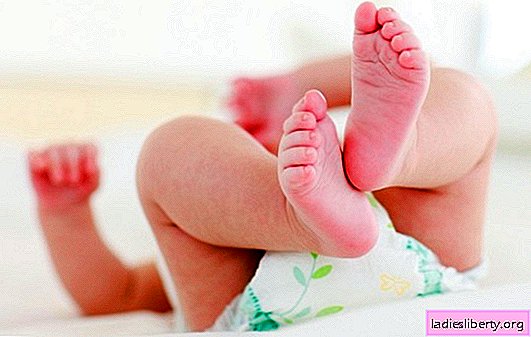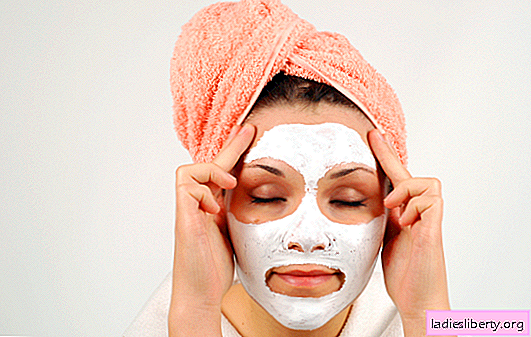
Sometimes insidious and dangerous, but often unpleasant - living with the acute stage of deprivation, to put it mildly, is inconvenient.
The correct interpretation of the symptoms and the correct diagnosis determine how to get rid of a particular type of lichen, since the causes and methods of treatment in each case are different.
Lichen: possible causes
Not all cases of deprivation are susceptible to treatment. This disease is more related to deficiency of the immune system than infectious, and not all terrible-looking rashes are contagious.
Shingles
Also known as "herpes zoster," the lichen is caused by a virus and has a one-sided herpetiform skin rash. Accompanied by pain of varying intensity. Herpesvirus of chickenpox (Varicella zoster) leads to herpes zoster. The majority of the population first encounters this virus in childhood - in kindergarten or school, where it causes chickenpox familiar to all.
After the acute stage of chickenpox, herpes zoster "hides" in the cells of the human nervous system and remains there forever. In this latent state, the virus does not cause symptoms in most people until the end of life. But there are exceptions when shingles "breaks" through nerve cells into exposed areas of the skin, causing manifestations in the form of rash, pain and itching.
Activation of the virus is accompanied by fever and flu-like symptoms. Shingles can even affect internal organs.
Factors provoking the activation of infection:
• chronic stress;
• overwork;
• hypothermia;
• reception of immunosuppressants;
• the initial stage of AIDS;
• transplantation of bone marrow and other organs;
• cancerous tumors;
• radiation therapy;
• long-term use of glucocorticoids, cytostatics and antibiotics.
At risk are pregnant and lactating women, and people over 55 years old.
How to get rid of lichen in the case of herpes zoster is not a relevant issue. Treatment is effective in the early stages, and after the appearance of rashes on the skin, you can only use local remedies for treating wounds. The body heals itself in 2 to 4 weeks.
Infection with herpes zoster occurs from a person with an acute phase of herpes zoster or chicken pox through an airborne droplet and contact route.
Pityriasis (multicolored) lichen
Also known as sun fungus, pityriasis versicolor is a chronic fungal infection. These yeast-like mushrooms inhabit the skin, in the stratum corneum of the epidermis, and in every healthy person, without causing discomfort. Symptoms of pityriasis versicolor appear only in certain circumstances.
The forms of the fungus that causes multi-colored lichen (Pityrosporum orbiculare, Pityrosporum ovale, Malassezia furfur) can transform into each other. These yeast-like fungi also provoke seborrheic dermatitis and folliculitis.
Possible causes of the manifestation of multicolored lichen are a hot and humid climate. More often males suffer from it.
Pink lichen
Lichen Giber is attributed to infectious-allergic skin diseases with characteristic spotted rashes. On average, the disease lasts 1-1.5 months, sometimes drags on to 6 months.
Pink lichen is not transmitted from person to person either by contact or by airborne droplets. Until the end, it is not known what provokes the appearance of pink lichen, but its connection with a decrease in immunity, colds and the spring-autumn period has been proved. There is a version of herpesvirus types 7 and 6 as a causative agent of lichen ziber
The disease affects people aged 10-55 years, regardless of gender. Relapses are rare.
Ringworm
There are plenty of names for ringworm - these are dermatomycosis, scab, dermatophytosis, trichophytosis. The disease is widespread, has a fungal nature, and can "cling" to any person. Infection occurs when Microsporum, Trichophyton, and Epidermophyton enter the skin. You can become infected with dermatomycosis by contact and if personal hygiene rules are not followed.
People are at increased risk for ringworm:
• living in places with a humid and hot climate;
• in direct contact with the skin foci of a sick person (animal);
• immunocompromised (often due to immunodeficiency conditions - HIV, diabetes, or leukemia).
Most often, children from 3 to 10 years old are carriers of infection. If ringworm is obtained by communicating with animals, then the form of the disease will be much harder than from person to person.
They are affected by ringworm of the skin in any part of the body, including the hair and even nails.
Psoriasis, scaly lichen
This form of lichen is definitely not to be infected. Scaly lichen is a chronic skin dermatosis provoked by an autoimmune reaction.
The course of psoriasis is wave-like, with different durations of remissions and exacerbations of varying severity. Adverse reactions can provoke relapses - stress, infectious diseases, abuse of alcohol and other toxic substances.
How to get rid of lichen: symptoms and diagnosis
Pityriasis (multi-colored)
The main symptom of pityriasis versicolor is small dark red, clearly defined spots. They occur most often on the shoulders, back, chest and neck, less often - under the armpits. In the sun, spots do not change color, due to disturbances in the work of melanocytes. Azelaic acid, produced by the causative agent of pityriasis versicolor, prevents the synthesis of melanin, which is why the affected areas of the skin remain without pigment and do not sunbathe.
The size of the spots may be small, but more often they form large lesions. In appearance, the skin flakes slightly, pain and inflammation are not observed, since only the surface layer of the epidermis is affected.
Multi-colored lichen can last up to several months.
They diagnose it with an iodine test (Balzer) - suspicious areas of the skin are lubricated with iodine, which is immediately wiped with alcohol. The damaged loose layer of the skin absorbs iodine, leading to a sharp staining of the spots depriving in a dark brown color.
For an accurate diagnosis, take a scraping on which yeast should be detected.
Pink
At the beginning of the disease, one large, more than 2 cm, spot of light pink color appears on the skin. In the center, this “mother plaque” gradually shrinks, turns yellow and peels. After a couple of days, with the development of pink lichen, you can see many small pink spots up to 1 centimeter in diameter, in the center of which small dry scales appear over time, and the border does not peel off at the edges.
Ringworm
Lichen begins with the formation of red spots in the form of rings, which are accompanied by severe itching, as well as baldness of the front of the skull and dandruff. Symptoms can be more severe, up to purulent infectious secretions in damaged areas of the skin.
Psoriasis
The main symptom of psoriasis is very dry, red spots raised above the main skin. Such papules fuse together and form thick plaques, dooming the affected area of the skin to chronic inflammation and excessive formation of small capillaries.
Psoriatic plaques are located mainly on the outer surface of the joints. During an exacerbation, a small area of the skin can be affected by scaly lichen, and extensive spreads throughout the body can be observed.
How to get rid of lichen: a set of measures
Pityriasis
The main principle of treatment is a complex of antifungal drugs. In mild cases, external treatment of damaged areas is sufficient, in especially complex cases, systemic drugs are used internally.
It is more convenient to use drugs in liquid form - in the form of a spray, lotion or solution. They are easy to apply, no need to smear. Ointments are prescribed much less often. In order to no longer think about how to get rid of lichen, for the prevention of the disease, clothes and linen are changed and ironed every day.
Pink
This type of disease does not require treatment. The body heals itself after a certain time. Rashes can not be torn, squeezed and violate the integrity of the skin. If the lichen areas are very itchy, you can use antihistamines, hydrocortisone and other mixtures from itching.
Ringworm
The course of treatment for ringworm lasts up to 1 week after the disappearance of symptoms. Doctors know how to get rid of lichen, using antifungal agents, azole groups, terbinafit and tolnaftate. Lubricate the affected area with an iodine alcohol solution.
In severe cases, systemic drugs are used orally.
Self-medication for ringworm is dangerous! With the inept use of drugs, the liver can seriously suffer.
Psoriasis
How to get rid of scaly lichen is a question that doctors have been dealing with for centuries. In each case, the treatment of psoriasis will be different, and needs regular adjustment, as it often stops working after some time.
Antiallergic drugs are used to relieve itching.
How to get rid of lichen: pharmacy drugs
Pityriasis
Mainly use tools based on:
• triazole ("Fluconazole"),
• selenium sulfide (selenium persulfide - "Sulsena");
• imidazole derivatives (Ketoconazole, Sertaconazole, Bifonazole).
The combined technique is the best way to get rid of pityriasis versicolor: the entire body is treated with Nizoral shampoo, and as soon as the skin manifestations of the disease disappear, Fluconazole is taken orally. The duration of treatment and dosage are prescribed by the doctor.
Changes in pigmentation are prevented by cycloserine, which blocks the transaminase synthesis.
Ringworm
The basis for the treatment of ringworm is antifungal drugs:
• "Miconazole";
• "Clotrimazole";
• "Terbinafine";
• "Mycoseptin";
• Ketoconazole.
In severe manifestations of the disease and deep lesions of the integument, doctors prescribe "Griseofulvin" and selenium sulfide (the latter is prescribed with caution).
Psoriasis
To date, three new effective means of getting rid of scaly lichen have been approved:
• "Taclonex" (on the scalp);
• Excimer-laser system "Xtrac Velocity", (helps in especially severe cases);
• monoclonal antibody "Adalimumab".
There are a number of other medications that make life easier for psoriasis, but only a doctor should prescribe them!
How to get rid of lichen: folk remedies
Despite the abundance of the proposed folk remedies, getting rid of lichen can only be done with medication. Fish oil, iodine, milk thistle oil, garlic, cranberries and decoctions can only alleviate symptoms - relieve itching and inflammation, reduce scaly. The final treatment of yeast-like fungi can be achieved only with the help of decades-old scientifically proven drugs.











